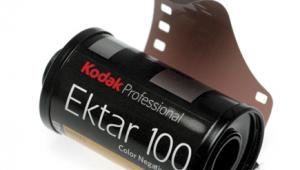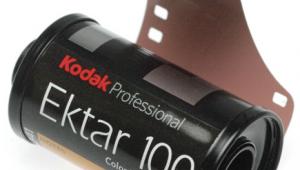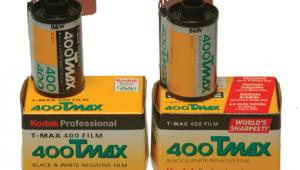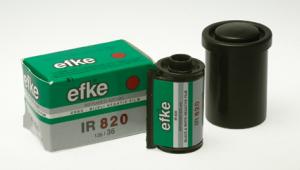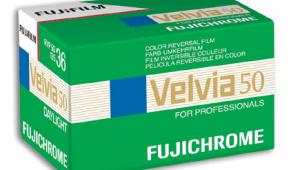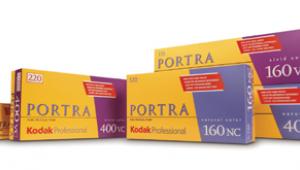photokina Special Coverage; Silver Halide Photography: Films, Papers, Chemicals, Darkroom, And More
 Walking
through some of the halls at photokina, you could be forgiven for thinking digital
photography has taken over. But look again and you can find plenty of silver
halide waiting to be discovered: new films, chemicals and papers, updated enlargers,
a new cold light source, and a new archival washer. Old friends, companies like
Paterson Photographic, Condor, Tetenal, and Hama, weren't showing new
products, but they made it clear that they are still committed to producing
and distributing all that we need to carry on making traditional silver-based
images.
Walking
through some of the halls at photokina, you could be forgiven for thinking digital
photography has taken over. But look again and you can find plenty of silver
halide waiting to be discovered: new films, chemicals and papers, updated enlargers,
a new cold light source, and a new archival washer. Old friends, companies like
Paterson Photographic, Condor, Tetenal, and Hama, weren't showing new
products, but they made it clear that they are still committed to producing
and distributing all that we need to carry on making traditional silver-based
images.
Let's start with new films. Just before photokina Kodak announced new
Portra 160 and Portra 400 NC (Natural Color) and VC (Vivid Color) films. This
is not just an upgrade of the existing films: there is some really clever new
chemistry involved here. One of the advances is referred to as Micro-Structure
Optimized T-GRAIN Emulsion. The new films have advanced development accelerators,
and the 400 films have a new dye sensitization called Antenna Dye Sensitization.
Rather than trying to explain the technicalities, suffice it to say that the
new films give finer grain and better color rendition. Not only do they print
very well conventionally, they also scan better than their predecessors. They
seem, too, to have a much better ability to handle mixed light sources than
any other color films I have ever tried.
Fuji introduced the films we saw at PMA to the European market, but what they
said is arguably more important than what they did. They consider film to be
the paradigm in photography, and all of their digital products are developed
with this in mind. Fuji does not simply maintain that digital can equal the
sharpness, resolution, and performance of film, though they do see this as an
achievable goal. On the other hand, they aren't standing still when it
comes to film. Research and development continue. One of the possibilities they
showed was a holographic film. This may or may not come to market, but it shows
Fuji's commitment to films of all sorts.
Maco had two new films: Rollei Scanfilm CN400 Pro and Rollei Retro 50 Slide
Direct. The latter is a monochrome reversal film, while as the name implies
the former is an ISO 400 color negative film (C-41 compatible). It has a clear
polyester base, but no orange mask. It is said to scan well. It can be used
to print conventional color prints, but it can also be printed on normal (non-panchromatic)
black and white photographic paper. Gone are the "long exposures"
caused by the orange mask, and although there will still be tonal inconsistencies
caused by the colored image, they seem to be significantly less than with other
more conventional color negative films--though I have yet to try this for
myself. It is important to remember, though, that polyester-based films such
as this are prone to light piping so they should be loaded in very subdued light,
otherwise the first few frames are apt to be blue. The new film is available
in 135/24 exposures and 120 roll film.
Maco's Rollei Retro series now includes glass plates. These are coated
with an ISO 100 emulsion similar to Agfa APX. Plates offer excellent flatness
and potentially superb resolution, but the prices are very high indeed. Twelve
9x12cm plates will cost you 358 euros (approximately $450 or over $35 per plate).
The more common 4x5" size should cost about the same, and other sizes
are available, though not in ULF (Ultra-Large Format): we specifically asked
about 12x15".
Anyone who was committed to Agfa products should look at both Maco's website
and Freestyle's website (Agfa distributors in the US). There are still
plenty of Agfa products available because Maco bought a great deal of Agfa's
production when they went out of business. This goes for chemicals as well as
film. Nor will Rodinal disappear: unlike the films, most Agfa chemicals are
now back in production by a new company, unrelated to Maco. But then, chemicals
are a lot easier to make.
Slow black and white films are increasingly (and to me, inexplicably) popular
and Bergger has a new one, an ISO 15 film with extreme acutance and fine grain.
At first it is available only in 120 but other sizes will follow. Like many
such films, it requires special low-energy developers.
Speaking of uncommon emulsions, if you are interested in such things as Adox
Ortho 25, or uncommon sizes such as 127 or 620 roll film or even unusual cut-film
sizes, contact JandC Photo in the US. They have good links with many of the
smaller manufacturers and import many of the products that are impractical for
bigger distributors to handle.
 |
|
|
The fortunes of both Ilford (now Harman Technologies) and Forte have completely
turned around since last photokina. And, because Foma had geared themselves
up to step into the breach if the other companies went down, they have found
their business growing, too. One of the reasons for this is that their US distributor,
Freestyle, now carries almost the whole range of Foma papers. Producing for
such a big market has concentrated their minds and all aspects of production
seem to have improved. All three companies told the same story: times had been
very tough, but now all three are growing. Of course the disappearance of both
Kodak black and white and Agfa papers are related to this.
- Log in or register to post comments





